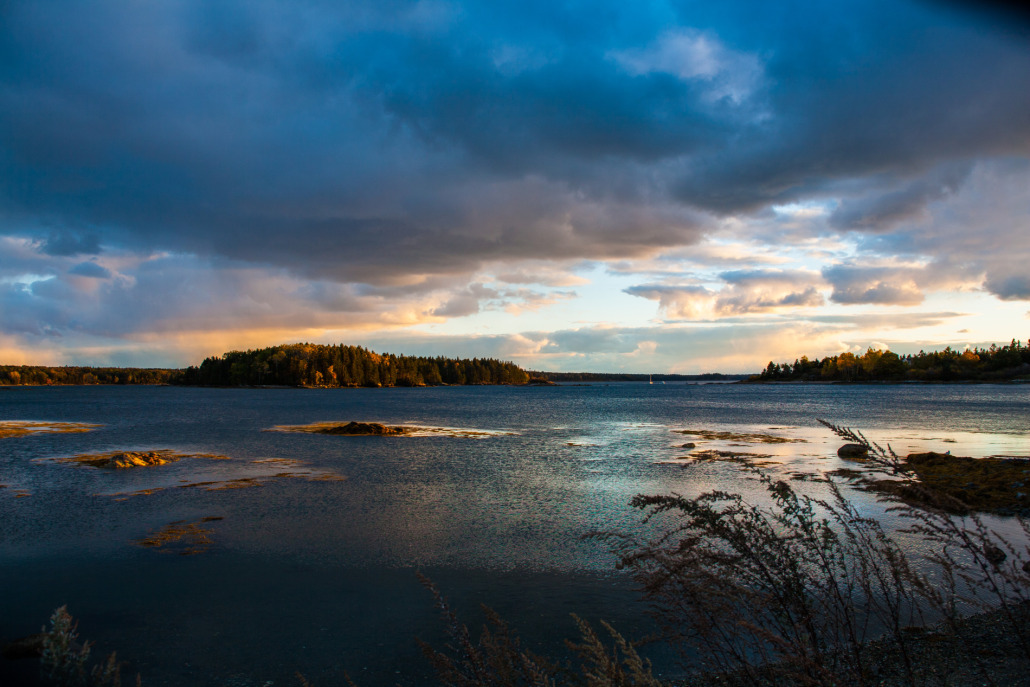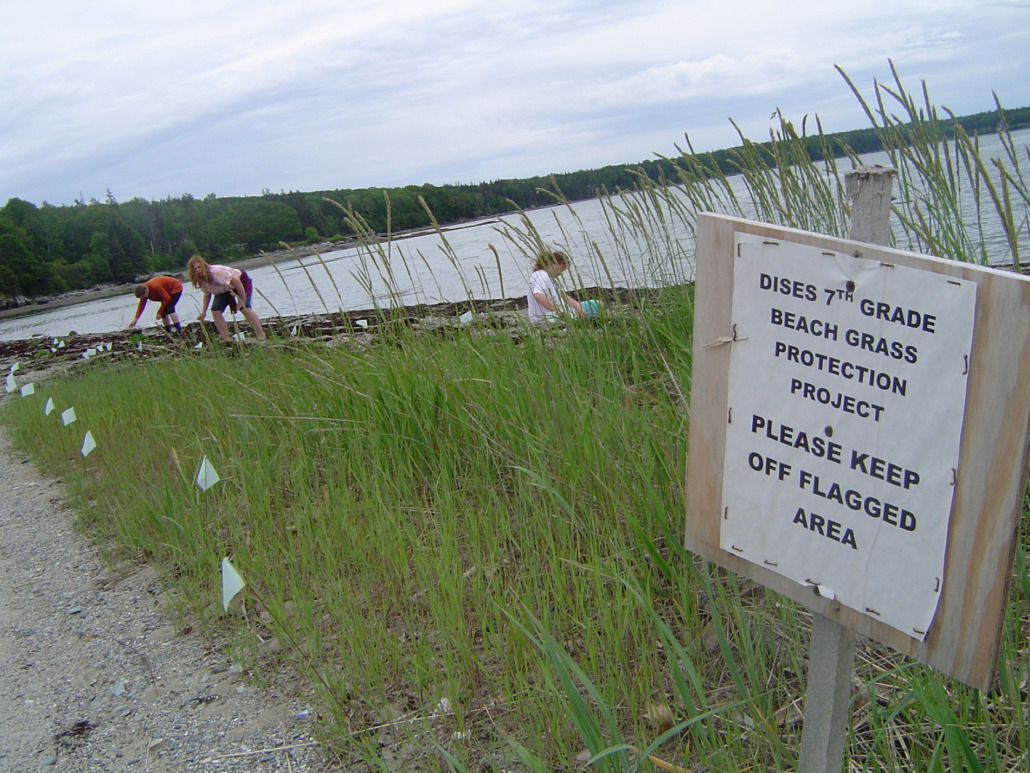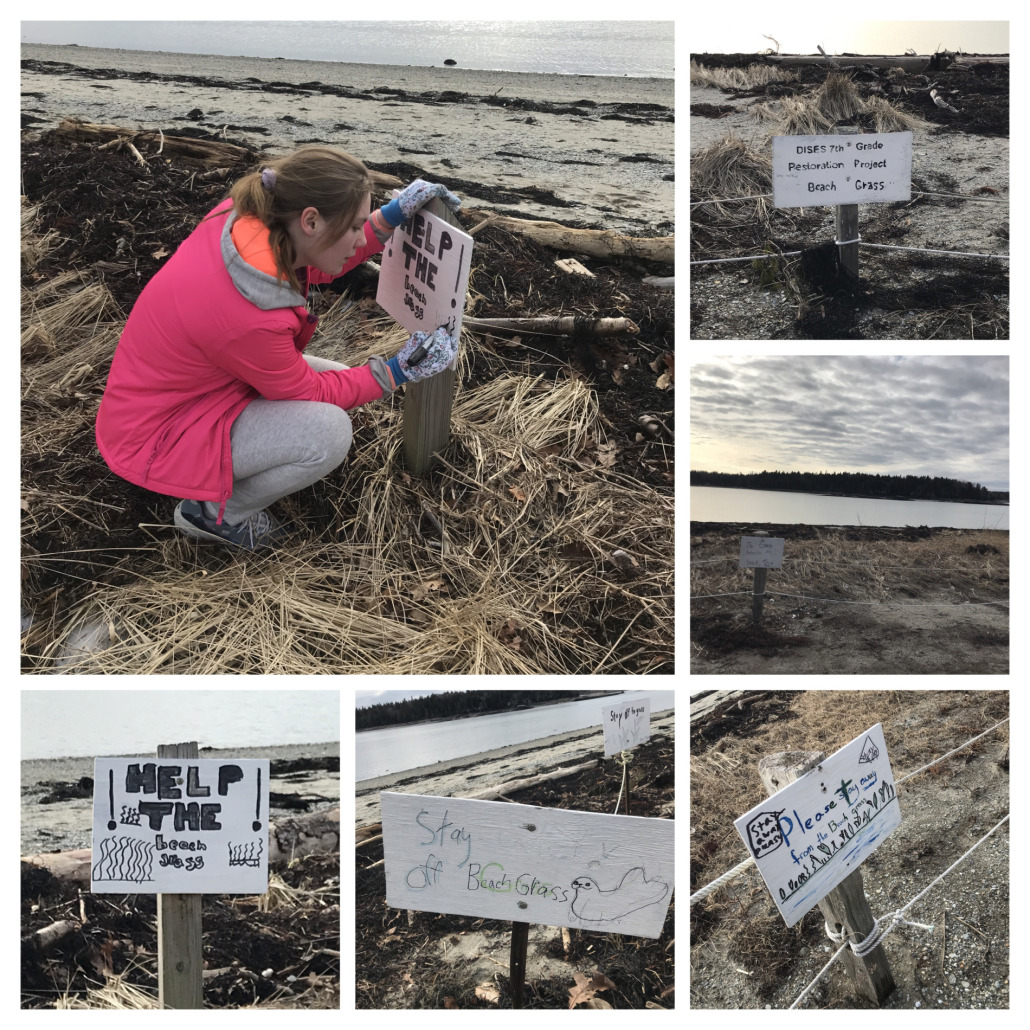CAUSEWAY BEACH, DEER ISLE
Quick access beach along the causeway, connecting North Deer Isle and Little Deer Isle.
ACTIVITIES TO ENJOY AT CAUSEWAY BEACH:
- Walking
- Swimming
- Tidal Exploration
- Photography
EXPLORE THE BEACH
Causeway Beach is a popular year-round spot for moderately easy beach access, swimming, dog-walking, and photography. Pull into the parking lot and you are just feet away from the sandy, rocky beach that transitions into mudflats at low tide. Enjoy views of Carney Island, a place protected by IHT that is home to eagles, osprey, and many critters. Visit (but do not step on) the beach grass dunes – an important protector of this ecosystem.
Each year, the seventh grade at Deer Isle-Stonington Elementary School studies ecology, how plants and animals and nonliving things exist together. Under the direction of teacher Mickie Flores and IHT’s Environmental Educator, Martha Bell, the students focus on the beach grass which literally holds together the sand bar at the Causeway Beach. Since driving on the beach had destroyed much of the beach grass, they received permission from Island Heritage Trust to mark the beach grass area with flags.
Check out the various, creative hand lettered signs they create to protect this ecosystem!
This project began in 2014 as part of an ongoing effort sponsored by the Maine Botanical Gardens with support from the Lunder New Naturalist program.
PLEASE FOLLOW THESE GUIDELINES:
- Day Use Only – no camping or overnight parking (including kayakers)
- No motorized vehicles of any sort are permitted on the bar, except by emergency vehicles.
- Pets allowed under strict voice control
- Fires permitted below the high tide line – please see state regulations.
- Foot traffic only
- Leave it better than you found it
- Respect the privacy of our neighbors
DIRECTIONS TO THE PRESERVE
From the Deer Isle bridge, drive south on Route 15 for 1.8 miles, crossing the Causeway to the preserve entrance on the right, opposite Scott’s Landing Preserve.
* Causeway Beach is greatly affected each year by tides and storms, with a rugged dirt parking lot. If you are in a vehicle with low clearance, consider parking across the street at Scott’s Landing.
GET TO KNOW THE FLORA & FAUNA
With Ecologist, Dr. Ken Crowell, & Naturalist, Marnie Reed Crowell:
“From May to July you may see eagles and eaglets. Herring Gulls with plumage indicating several age classes, as well as the slightly smaller Ring-billed Gulls are common here. You may also see and hear Laughing Gulls in summer. The flats here are home to several species of sea weeds and associated organisms. Razor clams, hen clams, and hermit crabs are interesting creatures that you may find here.
There are some interesting geological features nearby. At the southern end of the Causeway beach note the outcroppings of gray, twisted, plate-like layers of the Ellsworth Schists that make up this end of Deer Isle. The appearance of Ellsworth Schist bedrock gives you an understanding of why the beach pebbles here have the shape and texture that that they do. Each of our Island beaches has its own distinctive character.”
Check Out the FULL Virtual Guided Walk through Causeway Beach
GEOLOGY OF CAUSEWAY BEACH
At the southern end of the Causeway beach note the outcroppings of gray, twisted, plate-like layers of the Ellsworth Schists that make up this end of Deer Isle. The appearance of Ellsworth Schist bedrock gives you an understanding of why the beach pebbles here have the shape and texture that that they do. Each of our Island beaches has its own distinctive character.
the rocks of the shore at the other end of the Causeway, there are scratches left by the glaciers. On the other side of the highway, the Reach side, the rocks forming small, raised contours along the shore are Castine Volcanics. The material forming these rocks was deposited as volcanic ash and lava on the flanks of volcanoes like those that presently form the Japanese islands. These rust-colored rocks (below), some of the Island’s oldest and forming much of Little Deer, were once part of the plate that was Africa.
STORY OF PUBLIC ACCESS
For many years the owner of this beach did not welcome visitors. When the property came up for sale in 2004, a group of citizens banded together and bought the property and gave it to Island Heritage Trust. It is enjoyed year-round by residents and visitors alike.
HISTORY OF CAUSEWAY BEACH
The cove here – the water between Deer Isle and Little Deer Isle and surrounding Carney – used to be a superior fishing ground for flounder and other species – a great source of food and transportation for Indigenous people. Construction of the Causeway in the 1940s interrupted the tidal water flow between the cove and Eggemoggin Reach, changing the ecology of the cove and destroying the fishery.
At low tides the bar here was passable, but in the 1930s this crossing was reinforced with field stone from old walls. After winter storms eroded its edges, rock quarried from nearby Pine Hill was brought in. Highway departments will have to address the condition of the Causeway here again before long. Will ecological impacts be considered?



